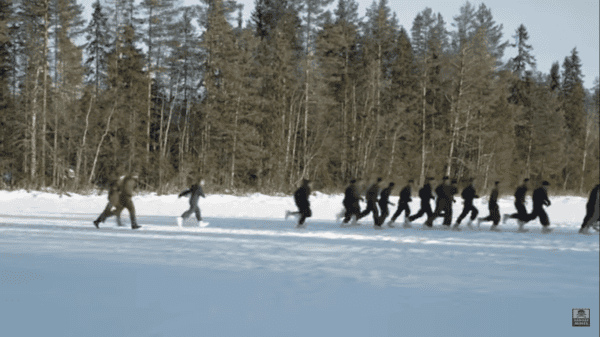Here is something that likely no one wants to do: jump into ice cold water, especially in February.
While these U.S. Marines from the Combined Arms Company in Rena, Norway are jumping into what is probably the coldest water there is, you can hear soldiers reminding those in the water to keep breathing. Jumping into water that cold can cause a body to go into shock or get hypothermia very quickly. The Norwegian soldiers from the Telemark Battalion are a little more used to this and had a good laugh at the American troops struggling through the exercise.

(Gung Ho Vids/YouTube)
First, the soldiers have to chop the ice away from what will soon be the most frigid swim they will ever take. Then, it’s time for an arctic run to get that blood flowing and the core temperature up before entering the water. A little bit of exercise and it’s time to take that plunge.
Two at a time, one on each end of the water, they take the plunge. They don’t have to stay in the water long, but they do have to get everything but their head immersed. It almost seems like it is harder for them to hoist themselves out of the water than it was for them to stay in, although they are only in the water for around five seconds.
Check it out in the video below:
The Marines are reminded periodically to breathe and move around to stay warm until it’s time to go back inside.
The next exercise requires a bit more time in the icy water. The Marines have to swim from one side to the other. This is all part of the Marines’ cold weather training and tests their ability to remain calm and to see if they are capable of getting out when the only thing they have to grab onto is ice.

(Gung Ho Vids/YouTube)
Hundreds of U.S. Marines conduct this brutal training with the Norwegian soldiers every year in northern Norway. This can be especially challenging for the soldiers from many places around the U.S. that have never felt cold temperatures or seen snow — let alone plunged into icy waters. But there is a reason for this type of training; the soldiers need to know how to maneuver around all types of climates. This could be in temperatures that hover over 100 degrees but could also be in temperatures that dip well below zero.
In spite of the temperatures, the Marines remained calm and completed the task at hand.



